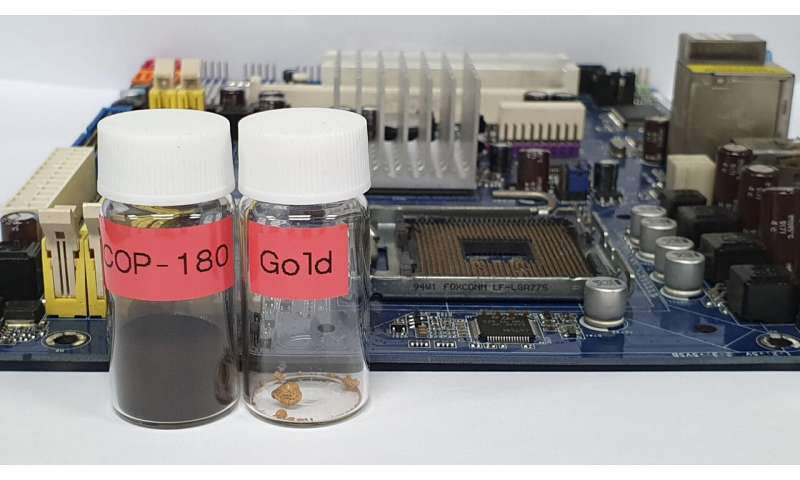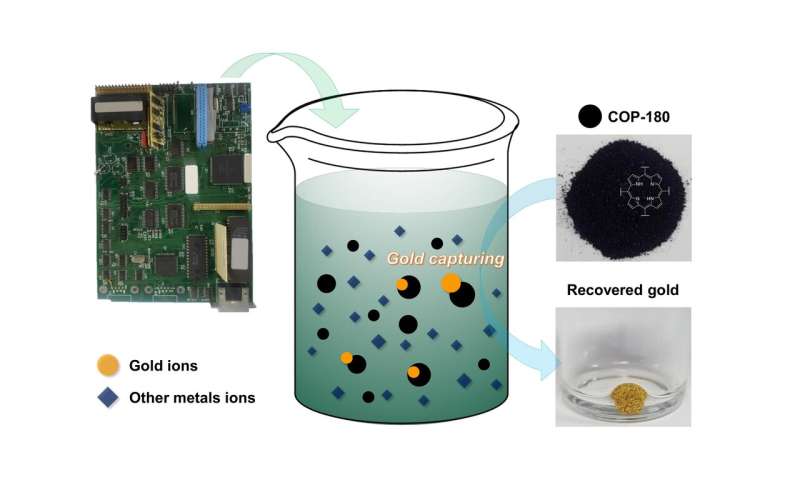
An international team of researchers has used a porous porphyrin to create a sorbent that can be used to reclaim precious metals from electronic waste. In their paper published in Proceedings of the National Academy of Sciences, the group describes their sorbent and how well it worked when tested with discarded electronic equipment.
As electronics have become more sophisticated, they have included more precious metals. But because it is difficult and dangerous to retrieve these metals, most wind up in landfills along with the other components that make up electronic waste—now known as e-waste.
Several groups of researchers have tried various materials to create a sorbent, a material with properties that allow it to collect other substances, that could be used to retrieve precious metals from e-waste. But thus far, these efforts have not been financially or environmentally sound. In this new effort, the researchers found a way to synthesize a porous polymer sorbent that was able to do the job cheaply, cleanly and efficiently.
The work involved porphyrins, which are molecules with a ring structure that also tend to bind with transition metals, including precious metals. They used porphyrins to create a polymer sorbent called COP-180 by linking the rings of the porphyrins. The researchers noted that the structure of the polymer allows it to maintain its stability when immersed in acidic solutions—this is important because acid solutions are used to remove the metals from circuit boards and video screens. And its high porosity allowed it to sorb large amounts of precious metals.

Testing the polymer showed it to be efficient at sorbing platinum and unexpectedly highly efficient at sorbing gold. A closer look at both showed that platinum dispersed evenly in an acid solution but gold clumped, allowing the sorbent to gather more of it than expected. Testing on real-world e-waste showed it was possible to collect 64 dollars' worth of gold using only a gram of the sorbent, which costs five dollars to make. The researchers note that the sorbent can also be reused, making it even more economical.
© 2020 Science X Network
Citation: Using a porous porphyrin to reclaim precious metals from electronic waste (2020, June 25) retrieved 25 June 2020 from https://ift.tt/2B9asSu
This document is subject to copyright. Apart from any fair dealing for the purpose of private study or research, no part may be reproduced without the written permission. The content is provided for information purposes only.
"Electronic" - Google News
June 25, 2020 at 08:56PM
https://ift.tt/2B9asSu
Using a porous porphyrin to reclaim precious metals from electronic waste - Phys.org
"Electronic" - Google News
https://ift.tt/3dmroCo
https://ift.tt/3bbj3jq
No comments:
Post a Comment